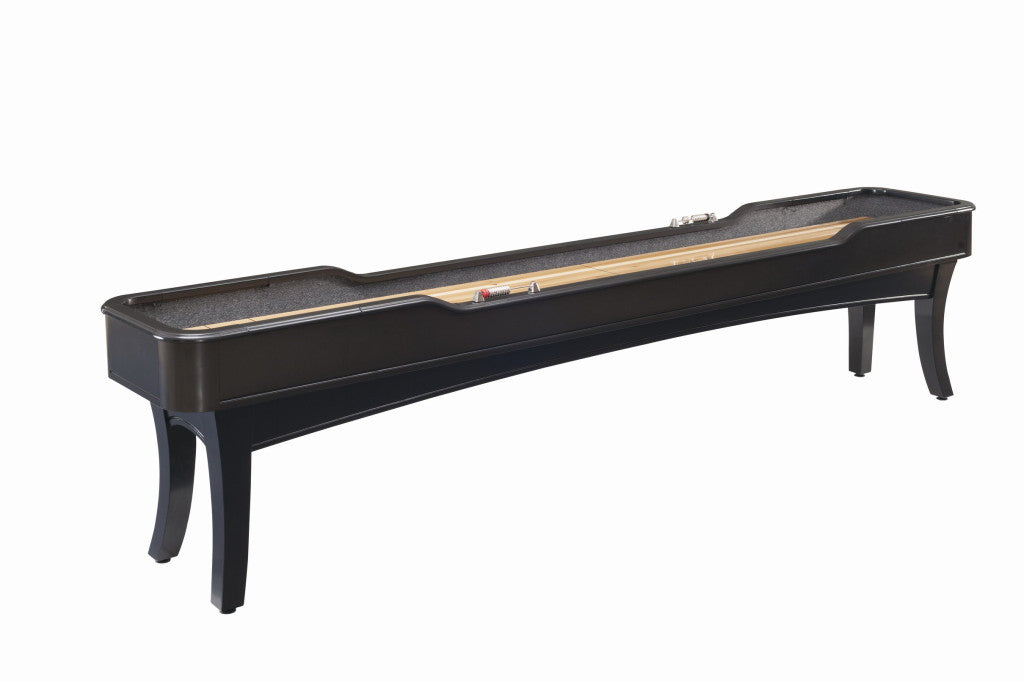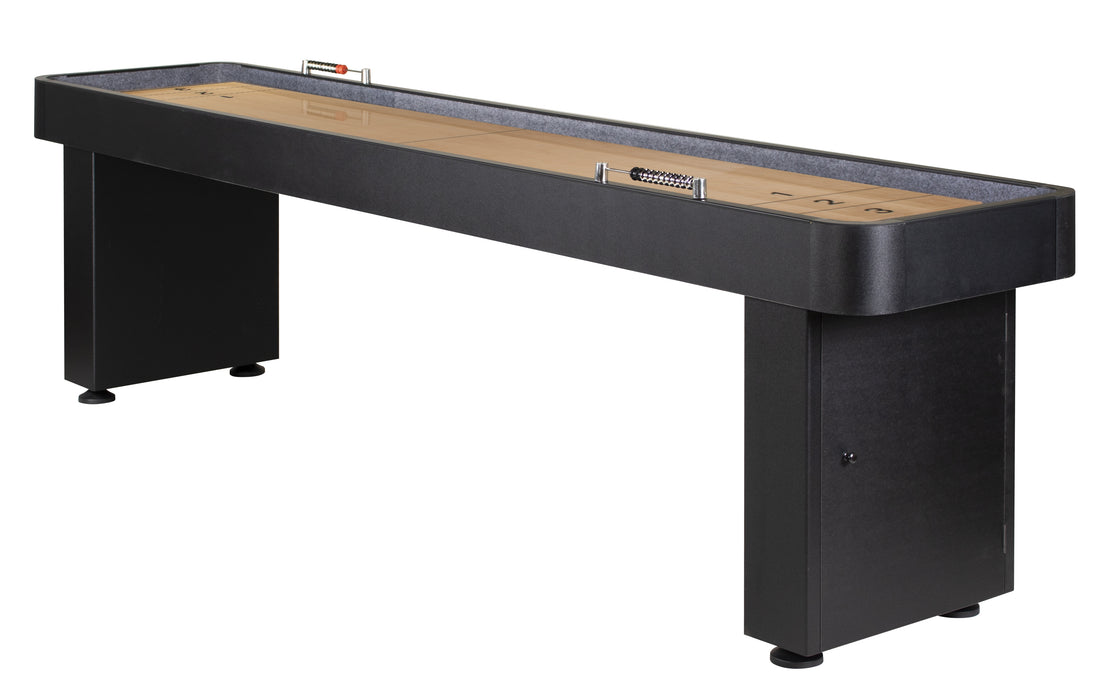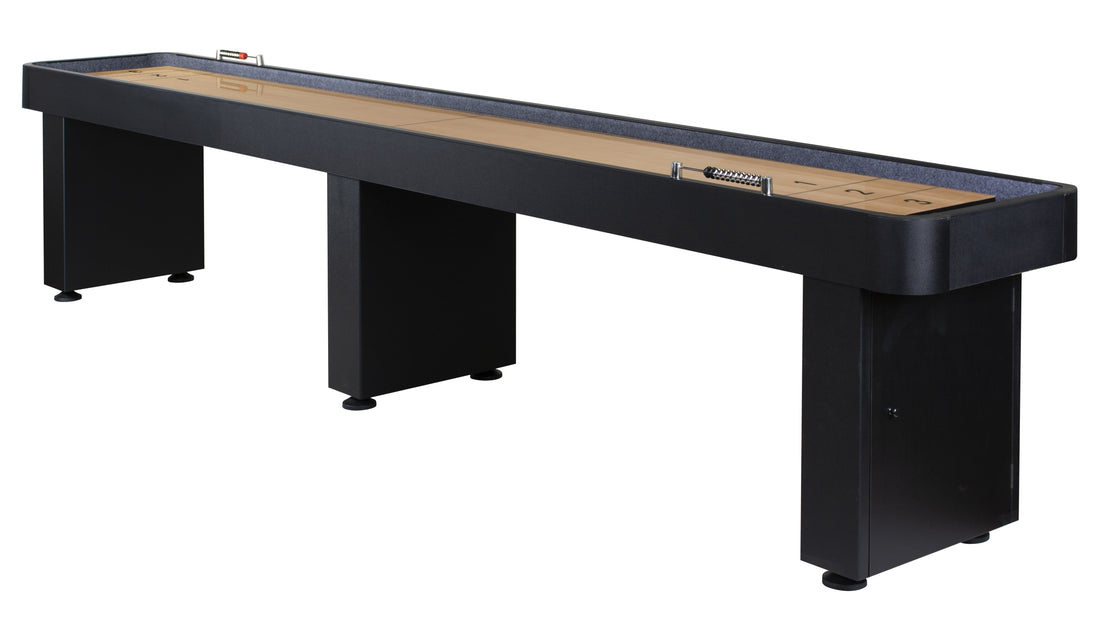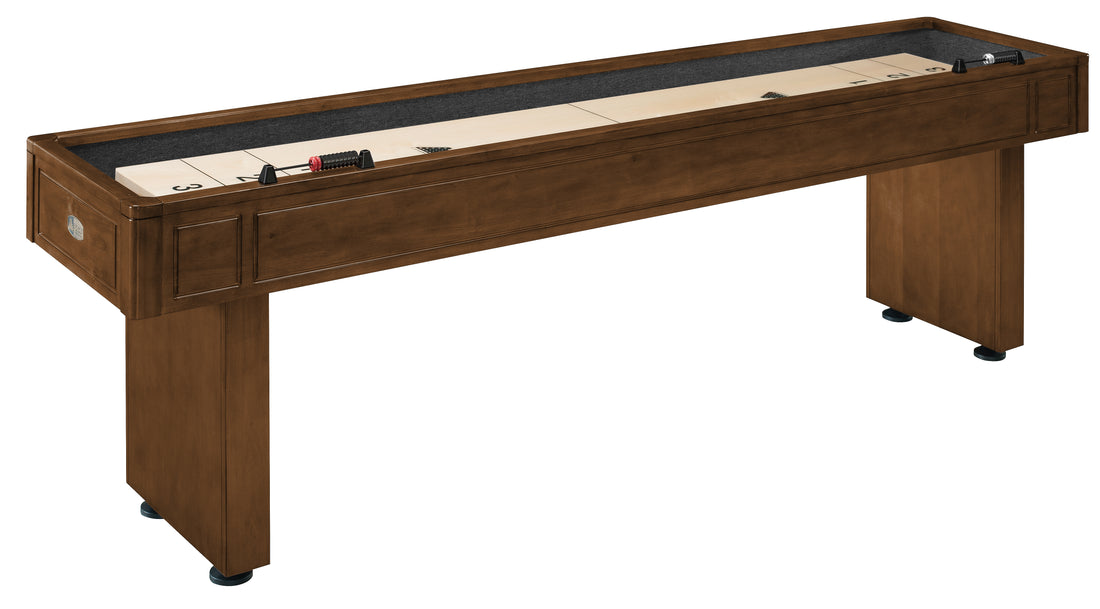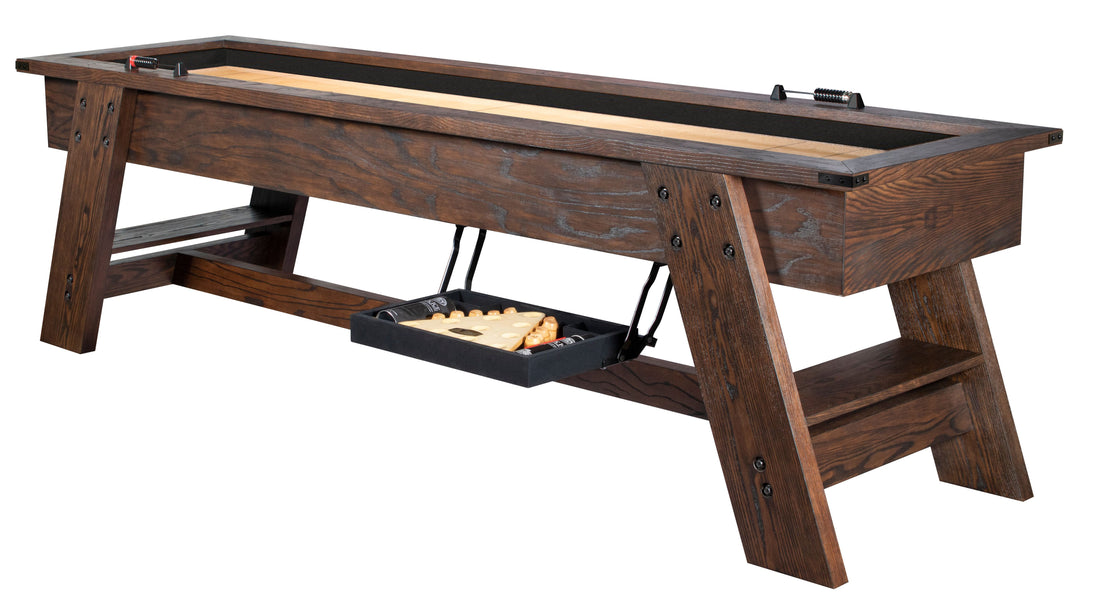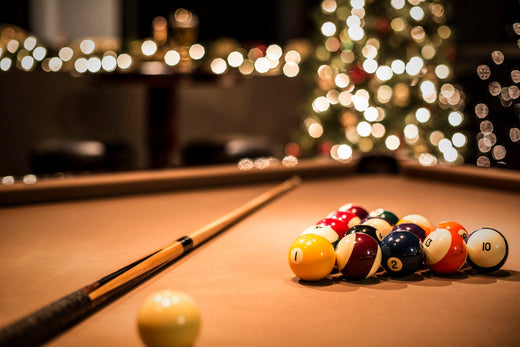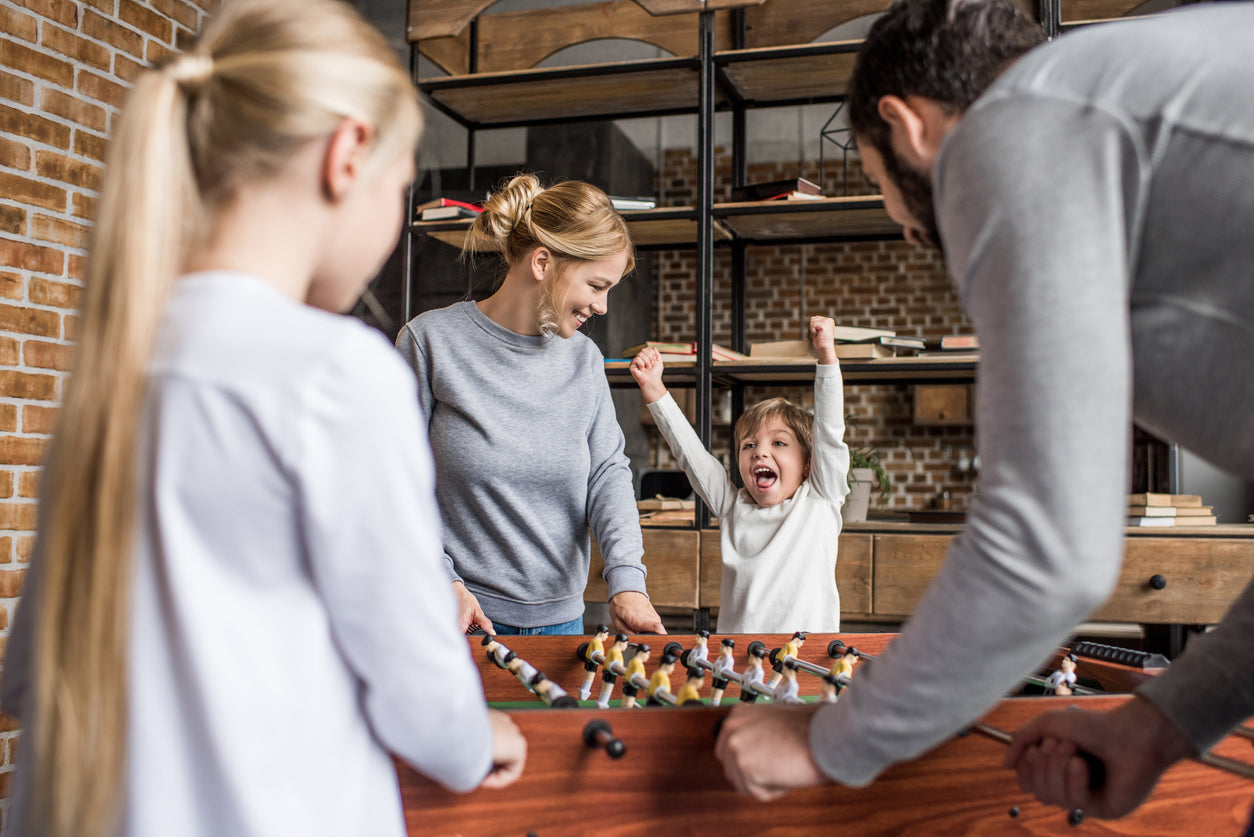Before the game begins, it is considered a sign of good sportsmanship for all players to shake hands. Players can flip a coin to decides who goes first.
Shuffleboard is played with weighted pucks, colored red or blue to indicate which player or team they belong to. Players alternate sliding their puck down the shuffleboard table. The main idea is to get the pucks as close to the end of the board as possible, without them falling off the end.
The center of the table is divided from each end by two lines called the “foul lines”. If the puck does not pass the foul line closest to the shooting player, it is considered to be in the ‘illegal zone’ and removed from the table. The table is surrounded by a gutter, called the “alley”. Pucks that fall into the alley remain out of play for the rest of the round.
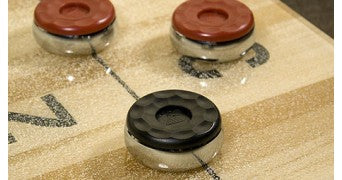
It is possible to hit the pucks of your opponent when sliding your puck down the table. Ideally, you can hit your opponent’s pucks into the alley, and therefore out of play, while moving your pucks into a higher-scoring position. If your puck passes the foul line, but then bounces off a puck and goes back into the illegal zone, both your puck and the puck of your opponent are removed from play.
Each player slides a total of four pucks to complete a round. At the end of the round, only the player whose puck is closest to the edge of the table can receive points. For your puck to score points, it must be on the table, over the foul line, and closer to the end of the table than any of your opponent’s pucks.
If the puck is overhanging the edge of the table, it scores four points. A puck that sits in one of the scoring zones receives a score of one, two, or three points, according to that zone. If a puck is touching the line, it receives the score from the lowest zone (for example, a puck in the second zone that is touching the line for first zone would receive one point).
In a two-player game, the first player to get fifteen points is the winner. In a four-player game of ‘doubles’, the first team to get twenty-one points is the winning team.
There are certain violations that will cost a player one point. To avoid any penalty points, ensure that you do not, in any way, rub your hands over the playing surface. Also, avoid extending the lower half of your body past the end of the board. Do not hold a playing puck in your hand while your opponent is shooting. While it is permissible to touch the frame, avoid touching the actual playing surface with either hand before, during or after making a shot.
In a singles match, it is permissible to go to the other end of the board to see the position of the pucks. When playing in teams, however, teammates stand on the opposite end of the table and play every other round, shooting from alternating ends of the table. The players are effectively playing two games at once, and combining the team scores. If you want to know about a puck’s position, you must ask your partner. Going beyond the foul line at any time during the round results in a penalty.
While anyone else is shooting— whether it’s your opponent or your partner—touching a puck that is in play is not permitted, nor is touching the playing surface or the frame of the table. Avoid touching any pucks in the gutter until the round is finished. Causing any vibration on the table will result in a penalty, even if the vibration is accidental—for example hitting the table or floor. As a rule, when it’s your opponent’s turn, it’s considered good etiquette dictates to stand far back and give her lots of room with no fear of interference.
Now that you know how to play, consider browsing our shuffleboard table selection.


